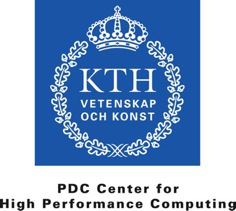Speaker
Ferenc Tasnadi
(IFM LiU Theoretical Physics)
Description
Recently Akiyama et al. [1] have discovered a tremendous about 400% increase of the
piezoelectric moduli in ScxAl1-xN alloys in reference to wurtzite AlN, around x =
0.5. This is the largest piezoelectric response among the known tetrahedrally
boundend semiconductors. Since AlN can be used as a piezoelectric material at
temperatures up to 1150 C and it easily can be grown as c-oriented, the AlN-based
alloys with such a high response open a route for dramatic increase in overall
performance of piezoelectric based devices. Nevertheless, a fundamental understanding
of the phenomenon leading to such a dramatic improvement in piezoelectric properties
of AlN is absent. It is unclear if the enhanced piezoelectric response in ScxAl1-xN
is related to the microstructure or it is an intrinsic effect of the alloying. Our
quantum mechanical calculations [2] show that the effect is intrinsic. It comes from
the simultenous strong change in the response of the internal atomic coordinates to
strain and the pronounced softening of C33 elastic constant. The underlying mechanism
is the flattening of the energy landscape due to a competition between the parent
wurtzite and the so far experimentally unknown hexagonal phase of these alloys.
[1] M. Akiyama et al., Adv. Mater. 21, 593 (2009).
[2] F. Tasnadi et al., Phys. Rev. Lett. 104, 137601 (2010).
Primary author
Ferenc Tasnadi
(IFM LiU Theoretical Physics)
Co-authors
Björn Alling
(IFM LiU Theoretical Physics)
Carina Höglund
(IFM LiU)
Gunilla Wingqvist
(IFM LiU)
Igor Abrikosov
(IFM LiU Theoretical Physics)
Jens Birch
(IFM LiU)
Lars Hultman
(IFM LiU)

